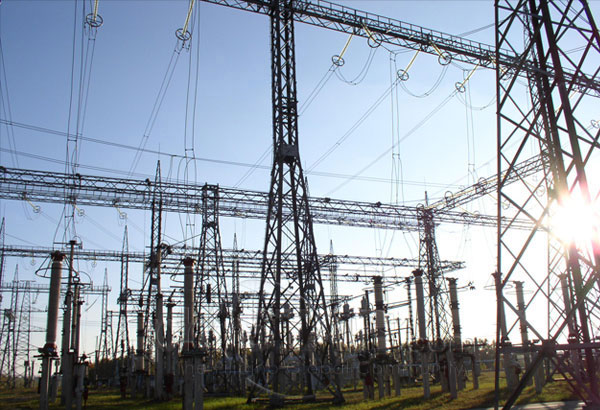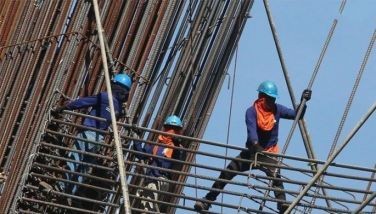IMF sees Phl GDP growth at close to 7%
In Next Two Years
WASHINGTON – The Philippine economy is capable of growing by around seven percent over the next two years on the back of robust domestic demand as well as a strong recovery in exports, according to the International Monetary Fund (IMF).
“Economic growth is expected to remain robust at around seven percent this year and next year led primarily by domestic demand and a recovery in exports,” IMF deputy director for Asia and the Pacific Department Kenneth Kang said over the weekend.
The economy grew 6.9 percent last year from 5.9 percent in 2015 on the back of the one-off boost from election-related spending as well as higher investments, making the Philippines the fastest growing in the region.
Kang pointed out investor confidence remain strong as shown by the investment grade rating as well as positive and stable outlooks from S&P Global Ratings, Moodys Investor Service, and Fitch Ratings.
External shocks arising from the normalization of interest rates in the US and the decision of the United Kingdom to leave the European Union more popularly known as Brexit as well as domestic political noise primarily from the all-out illegal drugs campaign of the Duterte administration have led to a volatile financial and capital markets.
“So overall we don’t see signs that investors have lost confidence at all. In fact, if anything, investor confidence remains strong as reflected in the positive credit rating outlooks that the Philippines has,” Kang said.
The government’s aggressive anti-illegal drugs campaign has claimed the lives of more than 8,000 suspected drug addicts, who are all alleged victims of extra-judicial killings (EJKs).
“I can’t comment on the political and security issues. But when we look at all countries in the world, we look for an economic policy that focus on inclusive and robust growth.”
The country has booked a positive GDP growth for the past 72 straight quarters or since the first quarter of 1999. The robust expansion was achieved amid a benign inflation environment allowing the Bangko Sentral ng Pilipinas (BSP) to maintain an accommodative policy stance since September 2014.
Inflation kicked up to a 27-month high of 3.4 percent in March from 3.3 percent in February due to higher oil prices and more expensive electricity costs, but remained well within the BSP target of two to four percent.
“Our view is that the stance of policy remains sound. Fiscal policy is appropriate focusing on inclusive growth and promoting social expenditures and infrastructure. Monetary policy is also on track given that inflation remains within the central bank target range,” Kang said.
For his part, IMF mission chief for the Philippines Luis Breuer said the growth outlook for the Philippines is subject to risks which is overall tilted to the downside.
“These include lower regional growth, US monetary policy tightening, and capital outflow. In addition, protectioninst sentiment in some countries could hamper the business process outsourcing sector, remittance flows, and the recovery of exports,” he said.
On the other hand, Breuer said the upside risk to the outlook is the higher global growth due to stronger policy support in the US and China.
“The Philippine economy has strong fundamentals and ample policy space which puts it in a stronger position than in the past to face any shocks that may arise,” he added.
The IMF expects the Philippine government to raise additional revenues equivalent to 2.5 percent of GDP once the proposed Comprehensive Tax Reform Program (CTRP) is passed by Congress. About 1.5 percent of the projected additional revenues would come from the tax overhaul while one percent would result from structural improvements in revenue administration over the medium term.
The CTRP submitted by Finance Secretary Carlos Dominguez to legislators last September is designed to raise an additional P718 billion for education P139 billion for health; P267 billion for social protection, welfare, and employment; and P1.73 trillion for urban and rural infrastructure.
“We also welcome the tax reform proposal which should aim to imrpove the income tax and value added tax systems and create the space needed for department of social and developmental needs,” Kang said.
The Duterte administration has raised its budget deficit ceiling to three percent instead of two percent of GDP as it intends to ramp up infrastructure spending to 7.4 percent by 2022 from 5.4 percent this year.
In the same press briefing, IMF director of the Asia and Pacific Department Changyong Rhee said Asia is seen growing faster at 5.5 percent this year from 5.3 percent last year making it the fastest growing region in the world.
“Asia is poised to remain the global growth leader into the future. But as in the past, securing this leading position will require continuing policy upgrades, vigilance against risks, and reforms to boost domestic demand and address growth bottlenecks,” Changyong said.
- Latest
- Trending































